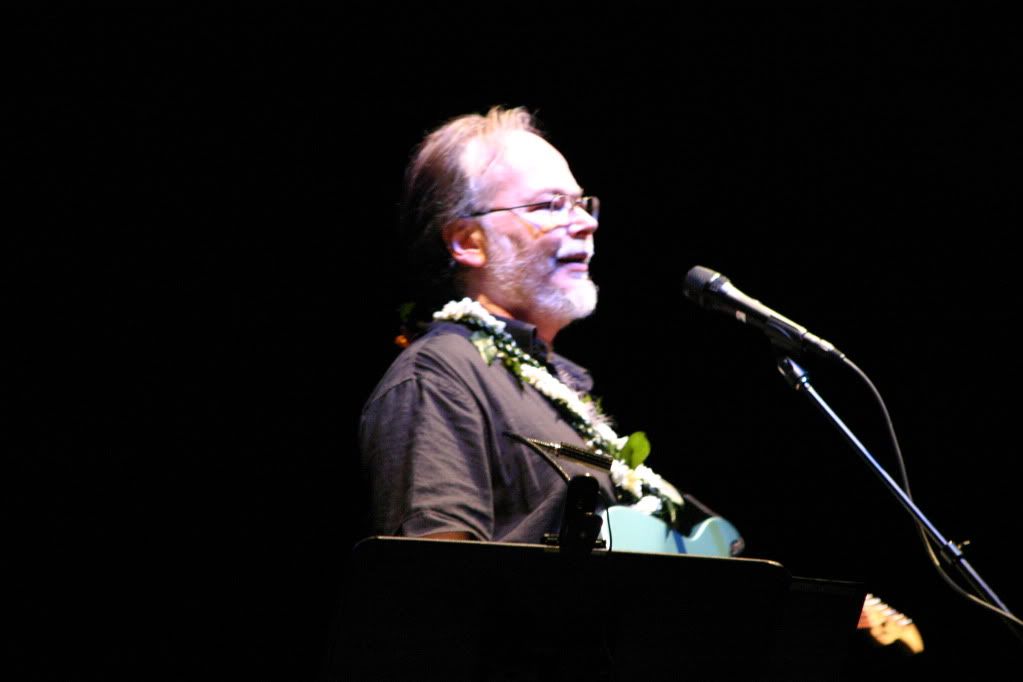Steely Dan (Donald Fagen and Walter Becker) composed and recorded Your Gold Teeth II almost thirty-six years ago on their Katy Lied Album (MCA Records) and the track sounds as if it were recorded today, fresh, tight, and with a be-bop groove that is unforgettable and will always be burned into my musical psyche as one of their very best jazz compositions and studio performances.
Deconstructing this song is fun because it fuses together so many classic jazz elements in a song that has weird lyrics to say the least. The arrangement is deceivingly simple and elegant with the piano, bass and drum parts that blend seamlessly throughout the track. The guitar solo and the underlying drum part are the highlights and placed front and center from the middle to the end fade-out for the song. The showpiece of this song hands down is Denny Dias' masterful guitar solo that pays tribute to Django Reinhardt. The guitar notes ring out and are clearly picked with a precision and jazz feel that any professional guitarist would appreciate. Denny plays this solo with passion and goes up and down the major and minor scales without bending a single note. One has to admire the dexterity, timing and precision of his playing as the solo is just nailed as soon as you hear the first few notes.
On this particular track, drummer Jeff Porcaro had a lot of trouble laying down the drum part. Instead bringing in another drummer, Donald loaned Jeff a Charles Mingus album with Dannie Richmond drumming to help him achieve the be-bop drumming groove he was looking for. (Dannie Richmond drummed for Charlie Mingus and was one of the best Be-Bop/Post Bop drummers in recent American Jazz history.)
As you can see from Jeff Porcaro Instructional Video, his dexterity and coordination is showcased as he casually performs what appears to be one of the most intricate drumming techniques. Jeff was truly a master of the drums and it's easy to see why he was in so much demand as a studio session drummer. He played on hit albums by the following artists: Bruce Springsteen, Dire Straits, Paul McCartney, Rickie Lee Jones, America, Miles Davis, Lee Ritenour, Michael McDonald, Tom Scott, BeeGees, Jackson Browne, Peter Frampton, to name a few.
Jeff was quoted in an interview by Modern Drummer Magazine: "'Your Gold Teeth II' is a song with lots of bars of 3/8. 6/8. amd 9/8. And it's bebop! I could swing the cymbal beat and fake it, but that always bothered me. After recording it, Fagen gave me a Charles Mingus record with Dannie Richmond on drums. It had a tune that was full of 6/8 and 9/8 bars. I listened to that for a couple of days, and we tried it again and it worked. What a cool thing! The ride cymbal on that, and on the whole record, is an old K Zildjian my dad gave me. Unfortunately, all the cymbals are clipped and phased on the album because the DBX didn't work. That was real heart-breaking for those guys"
As they became more proficient in mixing traditional jazz with rock and deliberately cryptic lyrics, the challenge of finding even more talented jazz musicians for their new material and albums became harder but they were always looking for talented jazz musicians in the most unconventional ways. They "found" Pete Christlieb by watching and listening to the Doc Severinson Band on Johnny Carson's Tonight Show on network television. Walter and Donald called the Tonight show producers and auditioned the first two saxophone players from the Tonight Show band before Pete showed up as they could not ascertain who this fantastic Sax player was when watching the three of them play on the Tonight show. Pete ended up being the third and final sax player to audition and as soon as he started playing, Donald and Walter hired him on the spot.
Check out this track. It is one of many tracks that Steely Dan has produced that provides so much technique and finesse and is one of the more contemporary jazz pieces with a be-bop backbone that has won over many jazz traditionalists and rock fans over the years. I believe it is a quintessential Steely Dan song that pushed them into Jazz territory and showcased their arranging and compositional talents outside of the Pop song structure and progressive rock genre.
Steely Dan Guitar Solo Medley Hank Easton Band
 |
| Donald Fagen |
